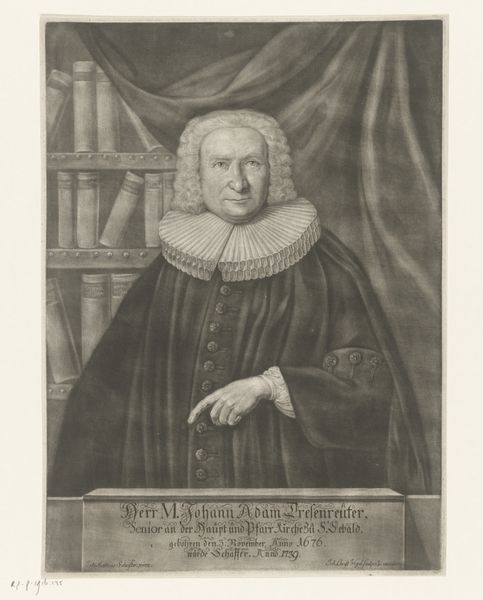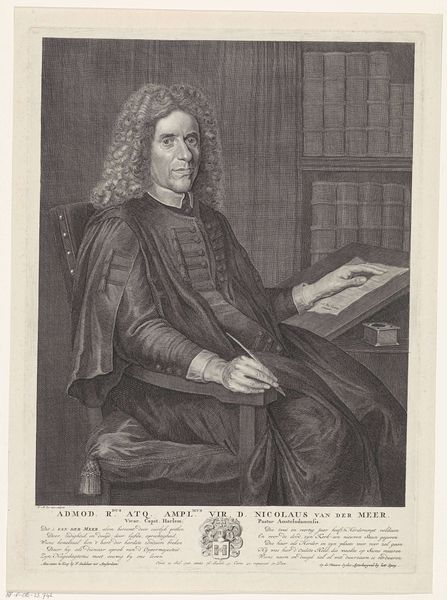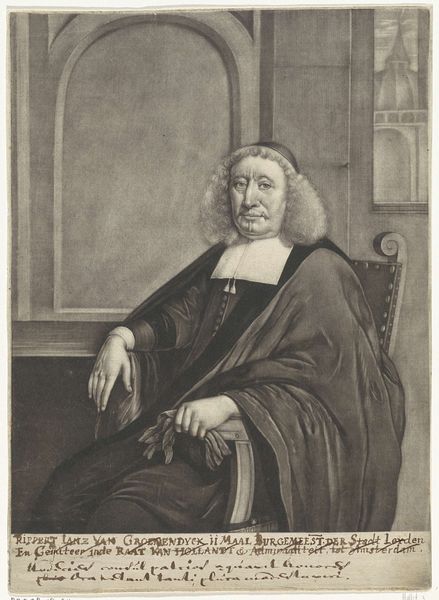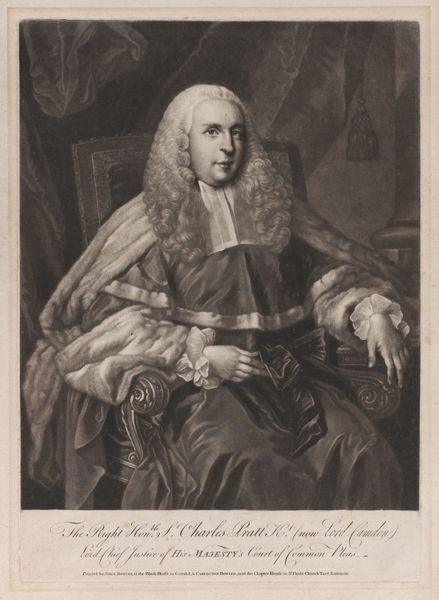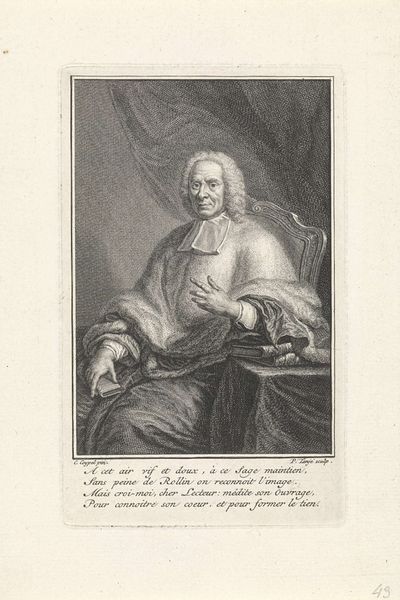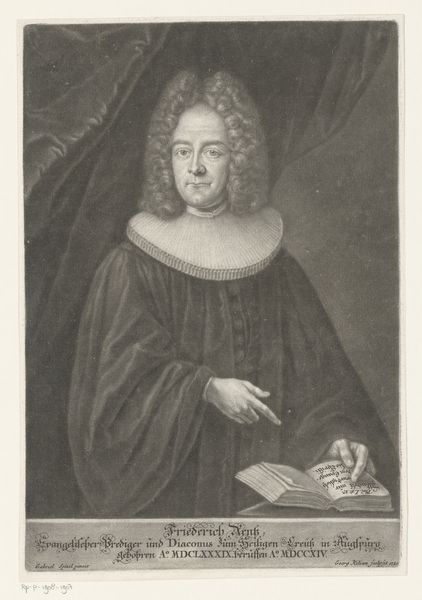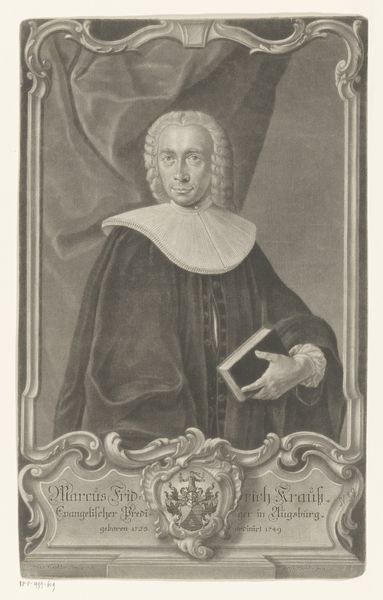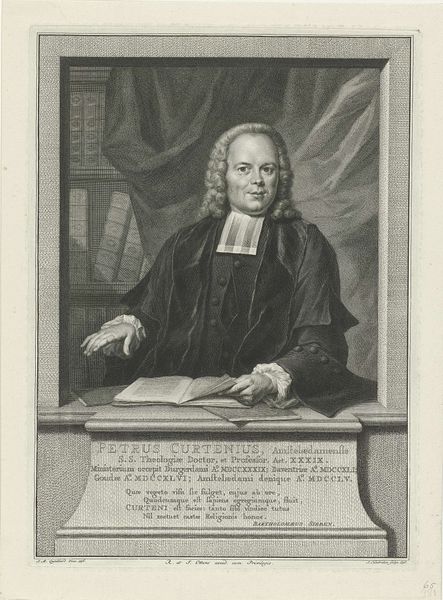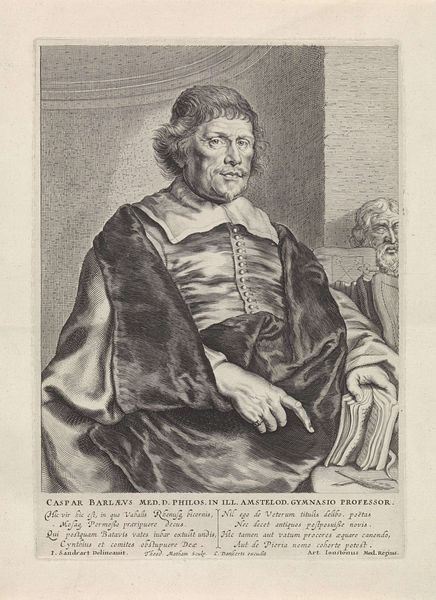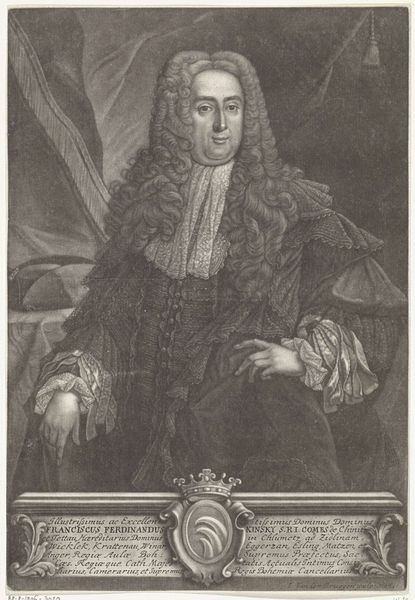
engraving
#
portrait
#
baroque
#
charcoal drawing
#
portrait reference
#
vanitas
#
history-painting
#
engraving
Dimensions: height 355 mm, width 278 mm
Copyright: Rijks Museum: Open Domain
Curator: This is a striking engraving dating from 1745, titled "Portret van de pastoor Franciscus Cornelius Dierout." It depicts the pastor Franciscus Cornelius Dierout. Editor: My immediate feeling is one of starkness. The contrast is really powerful. The gaze of the sitter is intense. The skull on which his hand rests contributes to an austere mood, but the detail in the wig is something else. Curator: Indeed. This portrait clearly situates Dierout within a certain socio-political sphere. You have the classic symbols of mortality—the skull and crucifix—combined with markers of status like the books and heavy drapery, but it is the gaze that grabs you, doesn’t it? It asks you, the viewer, about legacy. How will you measure up to those eternal questions? Editor: Definitely, and it speaks volumes about how power was, and perhaps still is, closely aligned with religion and knowledge. There’s a performative aspect to this portrayal. Consider what is intentionally conveyed versus what is left unsaid. This depiction could have taken other forms, but instead we receive this display. Curator: Precisely. It invites viewers to contemplate the societal constructs that informed representations of power during the Baroque era, with the deliberate framing around status and the weightiness of theological and political authority during the age. We see those questions embodied in Dierout himself. The themes in this image and time call out. It is worth considering where it has brought us to, still seeking authority and acceptance, centuries on. Editor: It makes you reflect on these ever present narratives about worth, visibility, and the power structures that perpetuate them, making us pause and consider what might shift as people like me interpret and repurpose images like this. Curator: Absolutely, and it's vital to consider not just the man in the portrait, but also who commissioned it, who it was intended for, and what social function it served. To engage with this portrait across centuries invites vital reflections on these shifting and unchanging social values. Editor: I completely agree. Considering these perspectives, I see the engraving in a richer, more multifaceted light.
Comments
No comments
Be the first to comment and join the conversation on the ultimate creative platform.

